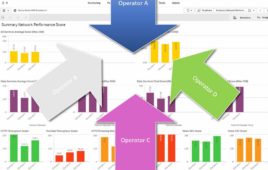
(Image Source: Associated Press)
Delivering low latency, or cutting down the lag time when information traverses a network from a user to a compute center and back again, will become increasingly important with the advent of 5G-supported applications like immersive virtual reality or remote-controlled robotics.
One approach to reduce latency is by placing computing power and storage closer to the user, at the edge of the network, a method known as edge computing. This decreases the distance so data doesn’t have to travel all the way to the nearest centralized data center, which could be several states away.
Verizon has been testing edge computing on a live 5G network at its test bed in Houston, using Multi-access Edge Compute (MEC) equipment and MEC platform software on the operator’s Intelligent Edge Network.
Verizon recently announced that MEC trials at the 5G lab, which used AI-powered facial recognition to identify individuals, successfully cut latency in half. This enabled engineers to identify people twice as fast when information was analyzed at the edge of the network, close to where the application was running, compared to a centralized data center.
“For applications requiring low latency, sending huge quantities of data to and from the centralized cloud is no longer practical. Data processing and management will need to take place much closer to the user. MEC moves application processing, storage, and management to the Radio Access Network’s edge to deliver the desired low latency experiences, thereby enabling new disruptive technologies,” said Adam Koeppe, Verizon’s Senior Vice President for Network Planning, in a statement. “This shift in where the application processing occurs, the inherent capabilities of 5G to move data more efficiently, and our use of millimeter wave spectrum is a game-changer when it comes to the edge computing capabilities we can provide.”
In addition to low latency, Verizon says bringing MEC to the network edge will result in benefits like enhanced reliability, energy efficiency, peak data rates and the ability to process more data through more connected devices.
“To achieve near-zero latency, where data moves many times faster than the blink of an eye, having computing functions closer to the user is a vital step,” said Koeppe. “With this test, we have shown how much of an impact the move towards a MEC-based network architecture can make.”




